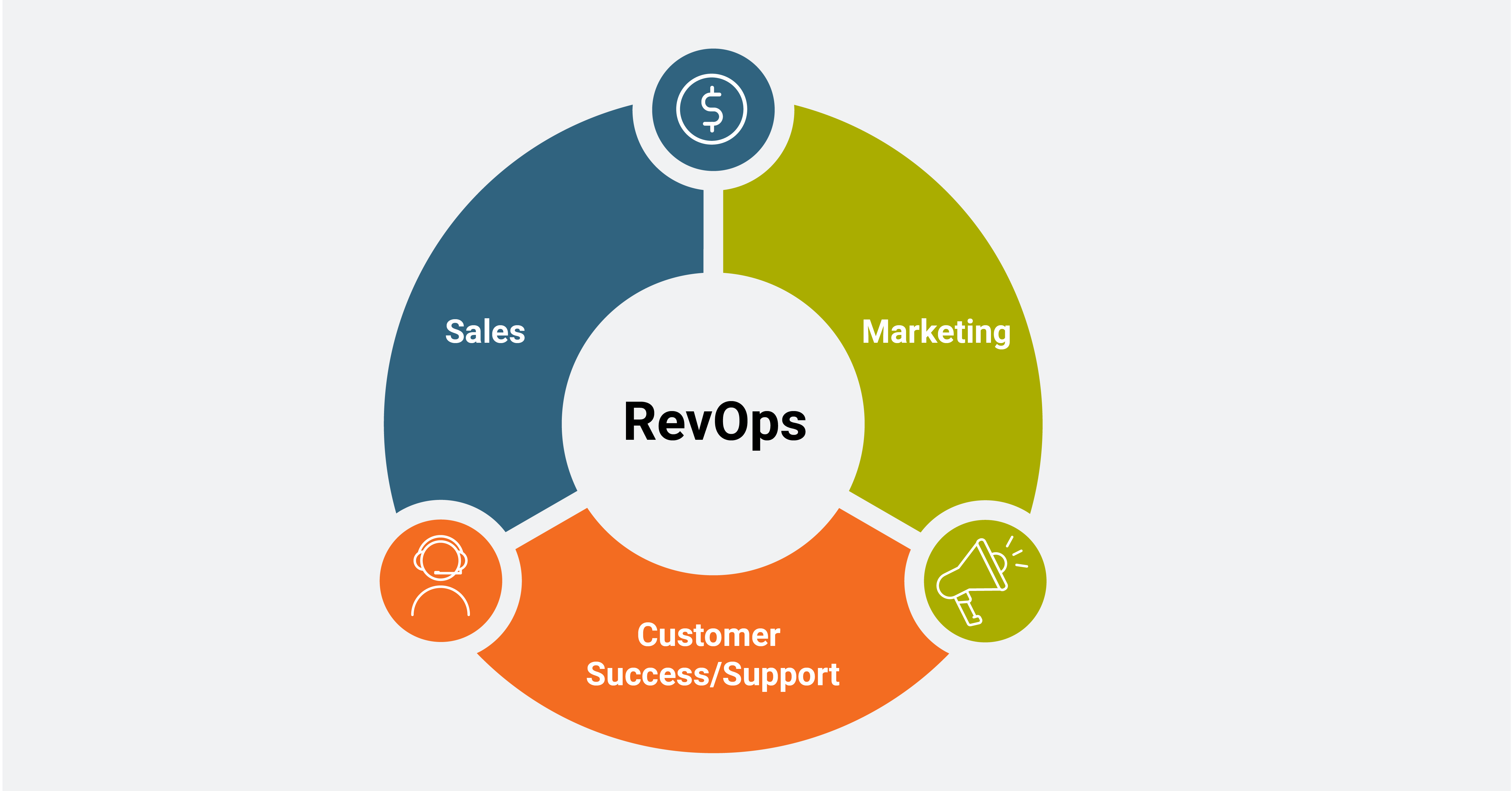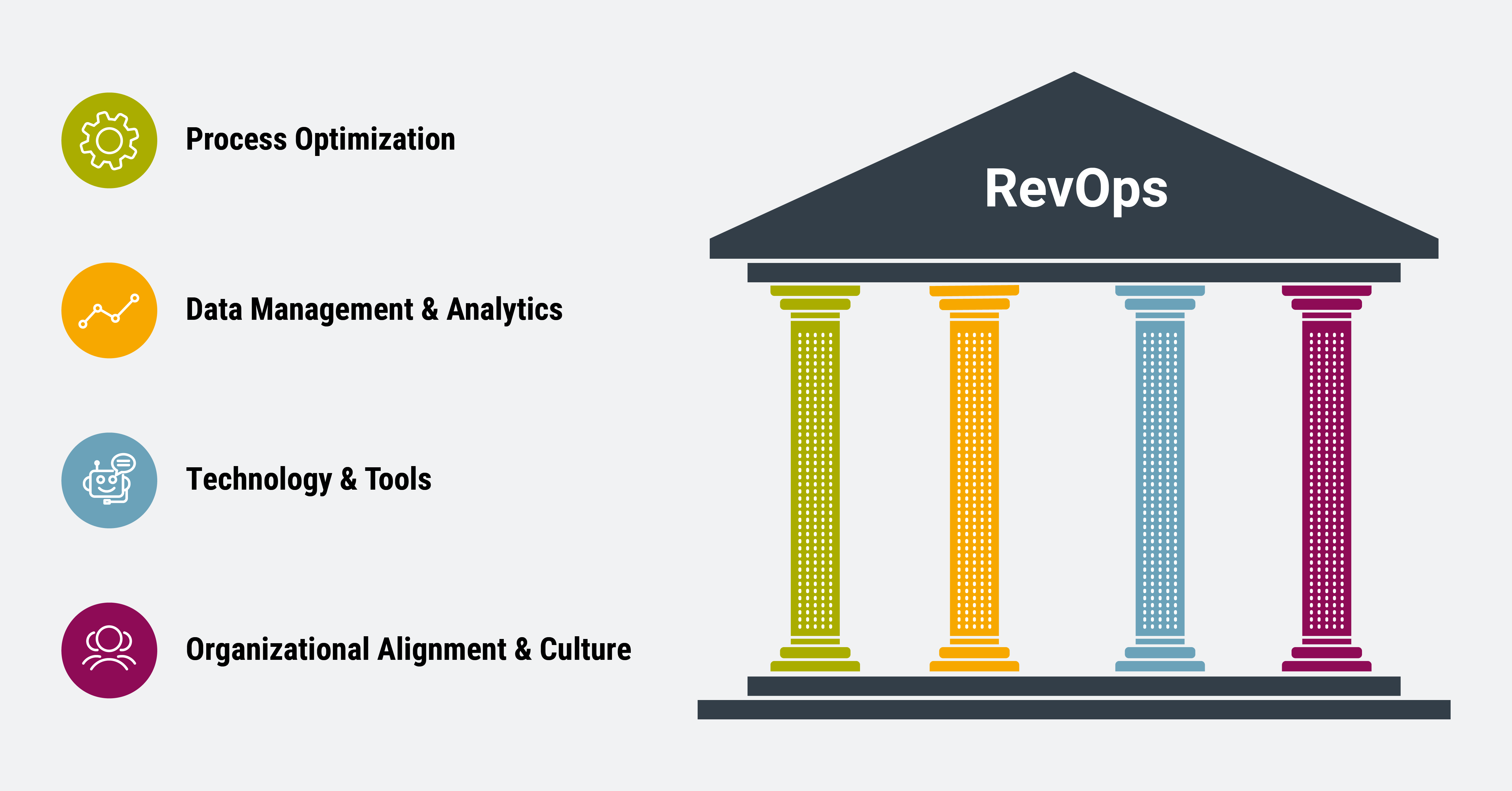
I’ve noticed several parallels between cultivating and maintaining my garden and driving revenue growth under the Revenue Operations (RevOps) framework. When I started gardening, I bought plants I liked and put them where I wanted.
No wonder so many plants died.
Just as the right balance of sunlight and shade determines my plants' viability, the balance of strategy and implementation is pivotal for B2B RevOps success. Just as a gardener shapes a garden's destiny with every decision, RevOps shapes the trajectory of business success.
What is a Revenue Operations Framework?
In my front yard, I strategically placed tomatoes and peppers in positions where sunlight is usually abundant so they could support and not compete with one another. Similarly, a RevOps framework positions each business function within an ecosystem in its optimal environment.

This integrated approach converges sales, marketing, and customer success/support, ensuring they no longer operate as isolated functions but as a harmonious, interdependent ecosystem that yields a lush, cumulative bounty. The strength of this approach lies in the four foundational pillars.
What Are the Four Revenue Operations Pillars?

Pillar One: Processes
In gardening, as you pull out weeds and nurture specific plants, you’re engaging in systematic routines to promote the health and growth of your garden. Similarly, in RevOps, it’s not just about executing tasks, but ensuring these tasks (or processes) are coordinated, streamlined, and aligned to drive overall revenue growth. The goal is to ensure you can deliver a seamless and consistent customer experience by removing any bottlenecks in your processes.
With that in mind, processes within the RevOps model must be communicated and documented. Team members must understand their roles under the RevOps model and how they contribute to its success. Some critical processes under RevOps that should be documented and optimized include lead management, opportunity management, sales outreach.
When executed and aligned correctly, processes allow for a holistic approach to revenue generation, ensuring that all departments contribute efficiently to the overarching business goals.
Pillar 2: Data & Analytics
When I assess soil quality or sunlight patterns for my azaleas, it’s an informed decision backed by observation and experience. Likewise, data and analytics function as vital assessments in the business terrain. They unearth insights from market trends to customer behaviors that enable your go-to-market (GTM) functions to make informed decisions that drive predictable revenue growth.
Data analytics can also help you identify areas of improvement while uncovering new revenue streams via upselling or cross-selling opportunities. Here’s a closer look at how you can leverage data and analytics:
1. Sales Forecasting
Much like the way I anticipate the growth of an azalea based on its environmental conditions, sales forecasting in business leverages historical data and current market trends. Predicting future sales outcomes provides crucial insights for resource allocation and guides strategic planning.
2. Data Management
In gardening or in business, constant monitoring is critical. In gardening, this could mean checking the soil's moisture or tracking the hours of sunlight. In business, when it comes to RevOps, this principle is about continuously collecting, refining, cleaning, and analyzing data. This ensures that the data stays accurate and relevant for decision-making.
3. Operational Metrics and KPI Tracking:
Just as I might observe the growth rate of plants or look for signs of stress in them, RevOps focuses on tracking key metrics. Monitoring performance indicators, like total revenue generated or customer churn rates, provides a clear view of the health and efficiency of various business operations.
4. Feedback Loops
A keen eye on which plants are thriving and which need more attention is essential in gardening. Similarly, in business, establishing data feedback loops is crucial. Feedback loops collect valuable insights, whether it's from internal teams about operational challenges or direct feedback from customers regarding their satisfaction with a product or service.
5. Pipeline Management
Overseeing the lifecycle of a garden, from the time of planting seeds to the moment they bloom, requires careful attention. Similarly, in RevOps, managing the sales pipeline means overseeing every step of the customer's journey. It involves guiding potential clients from the initial lead phase to becoming loyal customers. Analytics plays a pivotal role here, identifying potential roadblocks or stages where customer engagement might dip.
By harnessing the power of data and analytics under the RevOps framework, businesses ensure that their decisions are informed and rooted in concrete insights. They help identify revenue hotspots and areas that need nurturing, guaranteeing strategies are planted and thrive in the most conducive environments.
Pillar 3: Technology
In my garden, stones and walkways are not mere aesthetics; they channel water efficiently, ensuring each plant gets its requisite nourishment. Similarly, technology in RevOps isn’t for mere automation. Technology and tools aim to support the RevOps strategy while aligning people and processes toward a common goal: revenue growth.
Tools, from CRMs to analytics platforms, are the aqueducts of the business garden. They ensure resources flow seamlessly, information is accessible, and decisions are data driven while giving you a complete view of your customer and business performance. Especially in the age of Revenue Operations software (RevTech), technology is crafted to foster integration, mirroring how I’ve designed my garden for both utility and beauty.
Pillar 4: Alignment and Company Culture
Every plant in my garden, from the sun-bathing peppers to the shade-loving red maple, has its place and purpose. Similarly, true RevOps success hinges on recognizing each function’s unique value, fostering an environment where they synergistically contribute to the business’s overall growth.
To that end, creating a collaborative culture where open communication is valued and encouraged is vital. Weekly cross-departmental meetings or unified dashboards aren’t mere practices. They're the trellises and supports, ensuring every team grows in the right direction, both individually and collectively.
Similar to how plants go into shock when moved to a new environment, RevOps can cause resistance among team members who are used to operating in a particular way. To ease the transition to this new operating model, it’s essential to communicate and set proper expectations to reduce friction and create alignment.
Harvesting Success: The Growth Garden of B2B Revenue Operations
Growing your business using the Revenue Operations framework is a lot like gardening. Both require attention, hard work, and the right knowledge. Challenges will be like managing tough weeds in a garden or bringing different teams together in business. However, with patience and the right approach, every part of the business, just like every plant, can thrive.
Want to explore more RevOps content? Check out our blog on the four Revenue Operations pitfalls to avoid.





